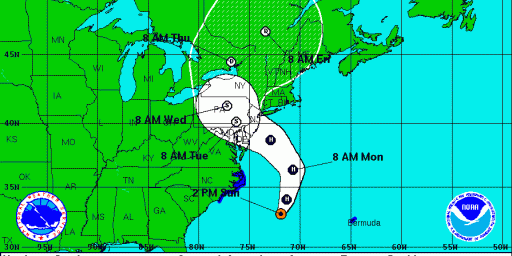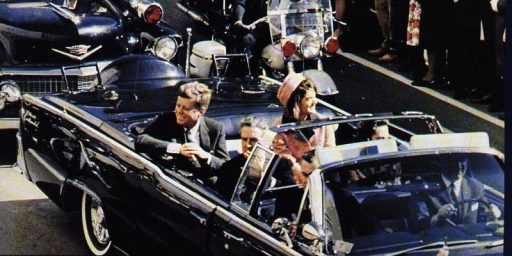It’s Nice to Have the Option
Ezra Klein points out that, at least in the context of mass transit, if you build it, they will come.
Driving is often a drag. Given a viable alternative, I’ll happily choose the competitor. There’s this tendency to ascribe Americans’ low use of public transit to some sort of cultural preference, as if it’s been a choice. But in many cases, it’s simply been a case of shitty, or inadequate, public transit options. If Irvine had had a real system of subways or light rail, I would’ve much preferred taking that to the Spectrum than having my parents drop me off. But I didn’t have the option. When I lived in LA, I would’ve done ANYTHING to avoid the freeways. People who move to DC or New York or Toronto don’t start taking subways because they adopt a new culture on day two. It’s because they suddenly have the option to take subways.
Living in a virtually mass-transit free area, I have to concur. I absolutely hate driving, and would love to have more options.
One of the tragedies of the history of mass transit isn’t just the lack of support it’s received throughout most of the country, but also the fact that many viable, working, well-used systems of mass transit were actually systematically dismantled in the middle of the 20th century. I don’t buy into the GM conspiracy theory, but there were certainly opportunities for governments to step in and preserve the systems — heck, just allotting public right-of-way instead of forcing transit companies to own their own might have saved some of them.






Portland, Oregon has blown a ton of money on light rail yet had to close bus lines to ensure riders would use it. Light rail is too expensive, much too inflexible, and more pork than public asset.
People in LA and other cities certainly would like to avoid the freeways, as long as they don’t have to give up their cars.
Mass transit is the wrong word. The masses drive to work. Please use the correct word public transportation. It works in DC because of the dense development but if you lived in Springfield and worked in Gaithersburg, you would drive because public transportation takes two hours in rush hour and breaks down once a week.
Of course, people talking about public transportation do not have kids in school that have to picked up when they get sick. If you read Dr. Gridlock in the Post there are horror stories about people trying to get home in the middle of the day.
I think the issue is less availability than it is suitability. Mass transit is fine, even essential, in places like LA and NY. My only experience with that kind of system was in DC, actually, and it was excellent (beat walking everywhere). That said, I’m pretty sure that the big city attitude towards driving is present only, well, in the big city. It seems to me that mass transit is only truly viable for someone like me who is NOT a city dweller and has always, since getting my license, had a car (although that definition is rather…flexible) the closer one gets to a dense city center lacking parking.
People generally *like* to be able to drive, where I’m from, and I think that it’s worth extending that assumption further to the rest of flyover country, because even a close location is 5 miles away. I suppose that rail might help that, but by its very nature, such systems are limited to optimum paths, which would end up helping no one.
The statement is equally true of highways. For the last 50 years not only have the federally-subsidized highways connected population centers, they provided conduits for development, an effective subsidy to real estate developers.
Steve, you’re just completely full of it – for one thing, Portland’s system is very, very successful at attracting people who previously _drove_. Yes, some bus lines were rerouted or eliminated – which is what should happen if you invest a lot of money into a transit spine which can serve passengers more efficiently (both for the passengers and the operator).
Steve –
I have quite enjoyed the MAX in Portland, I fly up there several times a year and its great for getting downtown from the airport without having to hassle with renting a car or picking it up. I’ve even gotten in late at night after the last scheduled run (thinking I was screwed) only to find a Train sitting there well past midnight. My only issues is really with the Portland Street Car, which could run a little more frequently than every 20 to 30 minutes.
As far as my South Bay to Downtown LA trip, if there was a light rail that didn’t involve changing trains in Watts and didn’t take an hour longer than driving the round trip, I’d probably take it.
I lived outside London for a while. I assume we can all agree that London and surrounding environs has a good public transportation system. I used it whenever I went into London, since it was easier and cheaper (in time and money) than driving. But I rarely used it otherwise. Easier and cheaper are the key. When you factor time into the cost, public transportation in the US has a long road ahead of it before it becomes more commonplace in most of the US, i.e., outside the largest cities.
Plunk doesn’t know what he’s talking about. During FY1998, the number of originating trips on Trimet buses was about 44.7 million and rail was 8.3 million. In FY2007 originating trips for buses was 47.5 million and for rail it was 28.4 million.
Changes at TriMet have resulted in larger ridership numbers for both modes and they are increasing the number of frequent service bus routes regularly.
Whoa there folks. TriMet itself admits to closing bus lines near the light rail to ensure ridership. That is a fact. Now you may all like the light rail but that doesn’t change the facts on the ground.
Before saying I’m full of it or I don’t know what I’m talking about be sure and have truth on your side. M1EK admits I’m right. Triumph uses 1998 stats and compares them to 2007. He should mention an expansion of both the bus and rail lines in that period. TriMet is also known for puffery when it comes to ridership.
The next portion of the line to open will be costing the taxpayers a lovely $69 million per mile. I smell bacon.
UTAH TRANSIT AUTHORITY has DESTROY the Bus System, by Fares Increases and Service Cuts over the last 10 Years. UTA needs to get Accessible Vans and Small Buses to go into neighborhoods to help Encourage Motorist to the Bus, to take Individuals to the Main Bus Route or Trax. Utah Transit Authority needs to Increase the Frequency the Buses and Low Fares to Encourage Motorists to
leave there Vehicle at home. John Inglish General Manager Salary is $266,614 Bonus $39,860 Other Incentives $60,526 Total $100,386, there are 9 more High Paid Executives that receive Huge Salaries and Huge Bonuses, all at Tax Payer Expense. For Less then Half as EFFICIENT Transit System.